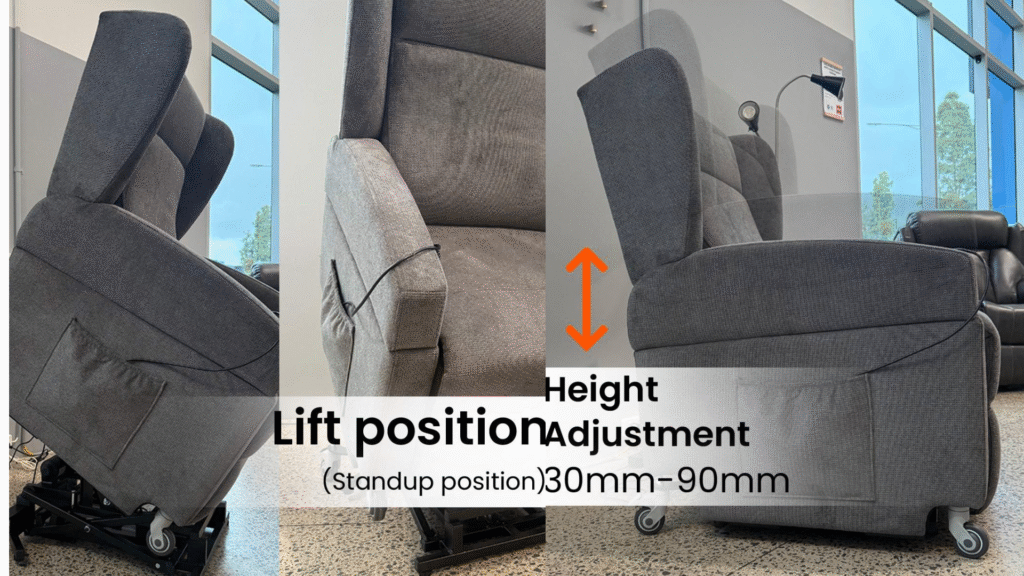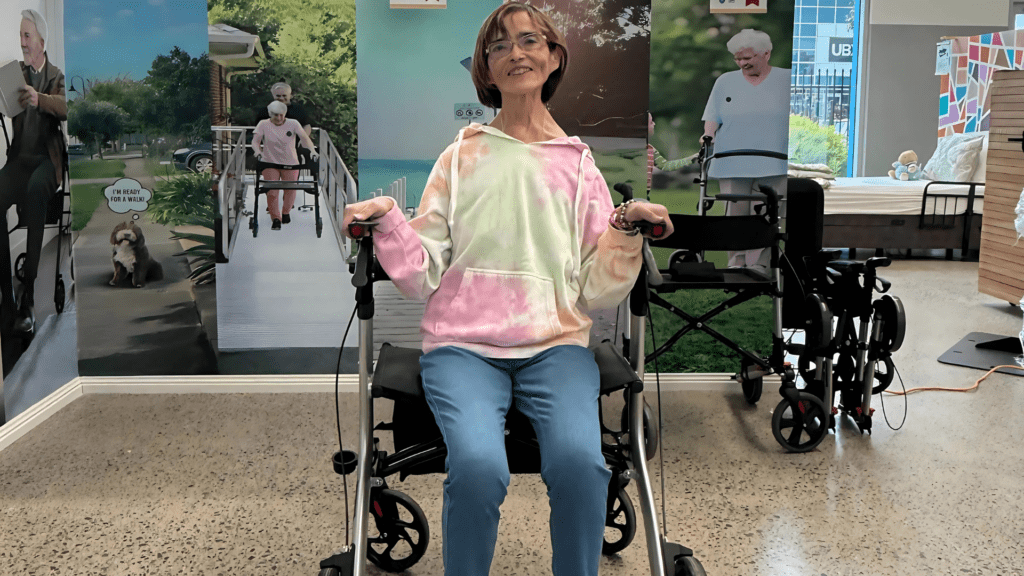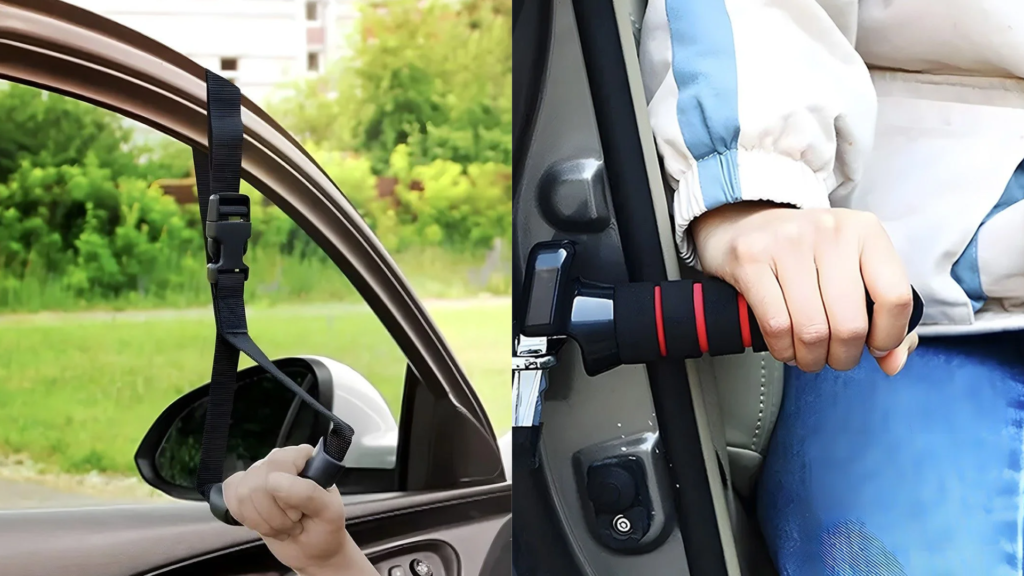Living in a small home, retirement unit, or aged care room doesn’t mean compromising on comfort or independence. If you or a loved one requires seating assistance but have limited floor space, a mobility rise and recline chair tailored for compact living is the ideal solution.
This guide helps you find the right electric mobility recliner chair that suits smaller rooms while offering full functionality—lift, recline, and comfort—all without taking up unnecessary space.
Why Recliner Size Matters in Limited Rooms
Standard rise and recline chairs often need ample clearance behind and in front for full movement. In compact spaces like:
- One-bedroom units
- Aged care rooms
- Small retirement villas
- Apartments with narrow doorways
…choosing a recliner that’s too bulky can restrict movement, interfere with walking aids, or block pathways.
A well-sized mobility recliner ensures:
- Clear walkways for safe mobility
- No need to rearrange essential furniture
- Easier placement in corner spaces or near walls
- Proper tilt and lift function without obstruction
Essential Features in a Compact Recliner
When selecting a rise and recline chair for small spaces, prioritise these key features:
1. Wall-Hugging or Space-Saving Design
- Allows recline motion with minimal distance from the wall
- Ideal for tight lounge rooms or care facility bedrooms
- Often requires only
5–10cm of clearance at the back
2. Narrow Base and Slim Frame
- Fits through
- Helps in aged care settings or older-style homes with compact door frames
standard internal doorways (approx. 75–80cm)
3. Electric Lift and Recline Functions
- Provides postural support and assists safe transfers
- Adjustable angles help with circulation and spinal comfort
- Single or dual motor options depending on user need
4. Pressure-Relief Seating and Lumbar Support
- Important for long-term sitting or users prone to skin breakdown
- Foam or gel-cushioned seats offer comfort in smaller chairs without bulk
Explore more compact options in our Mobility Recliner Range.
Recliner Models Designed for Small Spaces
- Slim profile designed for smaller homes and care units
- Dual motor operation for independent back and leg adjustments
- Height-adjustable recline for different transfer heights
- Upholstered in
- Ideal for NDIS and SWEP users needing assistive seating in tight areas
breathable, easy-clean fabric
Pair with additional accessories like side rail cushions or lap tables for comfort without clutter.
Installation and Clearance Considerations
Before selecting your recliner, take accurate room measurements and check:
1. Wall Clearance
- Wall-hugging models typically require less than 10cm at the back
- Traditional recliners may need up to 50cm
2. Chair Width
- Measure doorframes, pathways, and intended corner or wall placement
- Most compact chairs range between
65–75cm wide
3. Transfer Zone
- Leave at least 75cm in front of the chair to allow walkers or carers space
- Ensure power cords can reach safely to wall sockets
If unsure, request a home trial or in-home assessment through our team: Contact Us.
Matching Needs with Funding Support
Can I get a compact recliner through NDIS or SWEP?
Yes. Both NDIS and Victoria’s Statewide Equipment Program (SWEP) support recliner purchases when:
- Recommended by an
- Linked to mobility, skin integrity, or safe transfers
- Needed due to specific room size or access restrictions
Occupational Therapist
Process:
- OT assessment and product recommendation
- Submission of quote to NDIS or SWEP
- Approval and scheduled delivery or trial
Need a quote or product details for your plan manager? Use our product enquiry form.
Conclusion
Choosing a rise and recline chair for a small home doesn’t mean sacrificing functionality. With the right design, even compact chairs can provide full lift, recline, and support benefits without crowding your living area.
- Look for
- Check dimensions before ordering
- Use funding from
- Explore our compact recliner range
- Try our Hi-Low Power Recliner Chair
- Contact our team for in-home advice or NDIS funding help
wall-hugging, slim-frame recliners
NDIS or SWEP to support your independence
Frequently Asked Questions (FAQs)
- What is a wall-hugging recliner?
A wall-hugging recliner is designed to recline forward rather than back, allowing full operation while placed close to a wall—ideal for small rooms. - Will a rise-and-recline chair fit through standard doorways?
Most compact models are under 75cm wide, suitable for typical interior doorframes. Measure your space before ordering. - Can I get a recliner funded by NDIS or SWEP?
Yes. If clinically justified by an OT, these chairs may be approved under Assistive Technology. Our team can help with quotes and support. - Is there a trial option before I commit?
Yes. Care With Us offers home trials in Victoria for many recliner models, especially for NDIS or aged care clients. - Are compact chairs less comfortable than larger ones?
Not necessarily. With pressure-relief cushions, multi-motor movement, and lumbar support, compact recliners offer the same therapeutic value—just in a smaller footprint.



